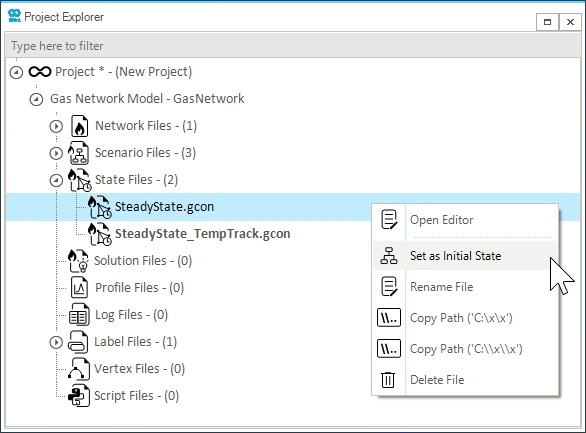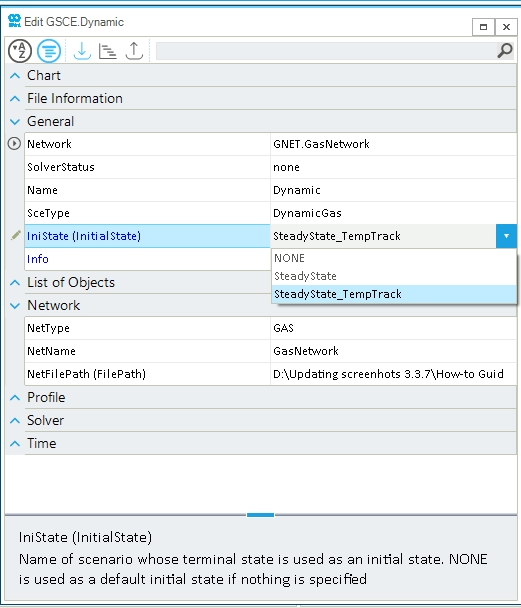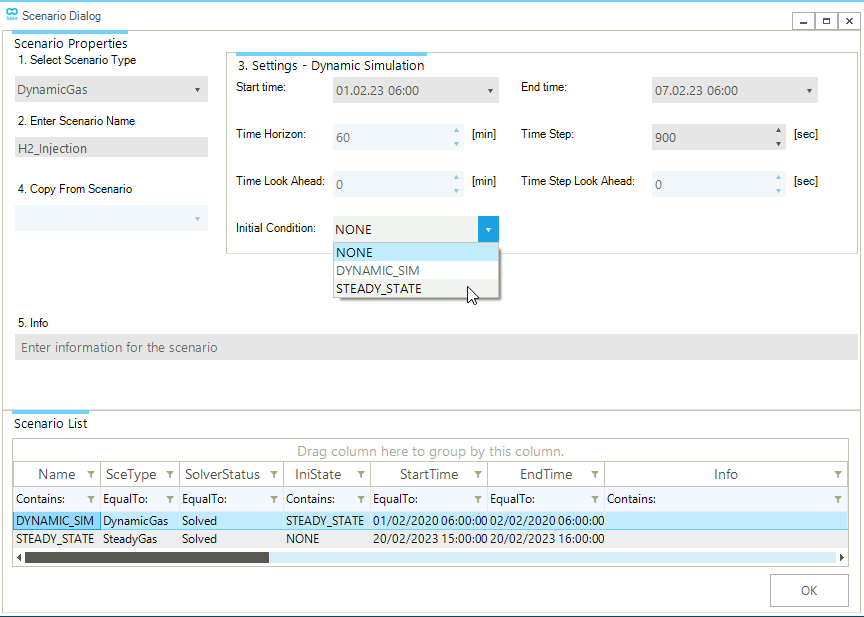Specify Initial State of a Scenario
This guide presents several methods used to specify the initial state for a quasi-dynamic or dynamic scenario in SAInt. The initial state defines the starting conditions of a scenario in SAInt based on the state file of any scenario (steady-state, quasi-dynamic or dynamic) linked to the SAInt project. This example is for a dynamic gas scenario. However, the methods presented can be used for any quasi-dynamic or dynamic scenario.
A related how-to is export a network state at a specific time step.
1. Set the initial state using the project explorer
The project explorer shows all available state files (i.e., *.gcon) from all the scenarios linked to the loaded network. As shown in Figure 1, to set a state file as an initial state on the loaded scenario, right-click on the file and select Set as Initial State.

2. Set the initial state using the scenario editor
Open the scenario editor from the scenario tab. Under the general section, change the IniState(Initial State) property. Click on ▼ to select the initial state from the available state files, as shown in Figure 2.

3. Set the initial state using the scenario dialog
This method can only be done while creating a new quasi-dynamic or dynamic scenario via the scenario dialog window and selecting an Initial Condition for the scenario. Similar to the previous method, click on ▼ to select the initial state from the available state files, as shown in Figure 3.
